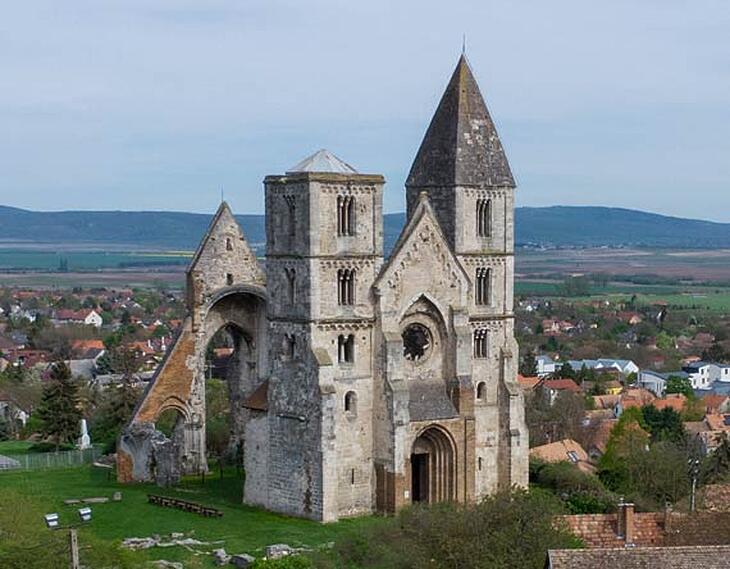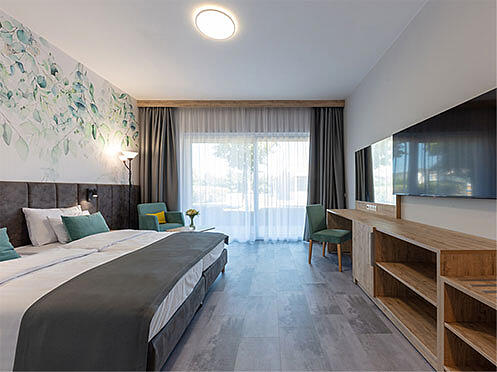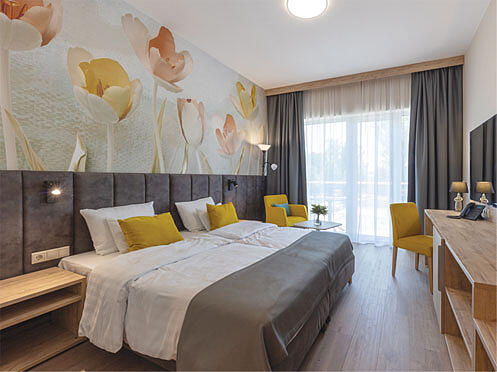Sights
Let's take advantage of the opportunity to get to know our country! Here is our beloved city, a real gem, which is easily accessible from all parts of the country. We, the people of Zsámbék, are proud of our 800-year-old Ruined Church, the unique location of our city, the Turkish Well, the Zichy Castle, the Zárda Garden, our Premontrean and Swabian traditions, and the role of our city in education. With an exceptional and special Premontrean permit, our passengers can also visit the Zichy Castle.

Ruined Church
The basilica, majestic even in its ruins, was built by the Premontrean monks around the mid-1200s. It was half destroyed by the earthquake of 1763, and has not been rebuilt since. The permanent exhibition of the Stone Archive evokes the memory of the church and the old times. From the top, there is an unparalleled view of the Zsámbéki Basin. The hill – on which the Ruined Church was built – is 200 meters above sea level. Visitors arriving from any point in the Zsámbéki Basin will first see the Ruined Church. A village church stood on this site in 1030 in accordance with the law of Saint Stephen. On this former single-nave village church, the late Romanesque - early Gothic style, three-nave basilica was built in the 13th century, and then the 4,000 m2 monastery belonging to it, which also offers a majestic view in its ruins. The 38-meter-long and 24-meter-wide church was built in the late Romanesque style, and features the characteristics of the new trend that emerged at the time of its construction, Gothic. Its Romanesque character is primarily shown in its external forms, while Gothic is mainly evident in the interior stone carvings. The plant decorative elements of the church are the lily, the three-lobed clover, and the grape. The figurative decorative element is the dragon, but there is also a human representation: a monk sitting in his robe.
Lampmuseum
Europe's first lamp museum opened in 1971 from the extremely rich private collection of Ferenc Borus. It contains almost everything from Roman oil lamps to the candlesticks of former princes to the railway lamps still in use today. In the 1960s, Ferenc Bours set up a "Wine Museum" in his own wine cellar from his collection of bottled drinks. While looking for suitable lighting equipment, he came into contact with lamps. He liked the beautiful pieces so much that he became their collector without even realizing it. With a few exceptions, he bought the exhibited objects with his own money, there was a day when he came into possession of 20-25 pieces. Most of the objects were dirty, rusty, and incomplete, so he also mastered the art of restoration and put each lamp in order by himself. Thanks to the popularization work of the Hungarian Telegraph Office, the lamp collection gained world fame. Currently, there are 1000-1100 lighting objects in the country's only Lamp Museum. The institution was included in the Guinness Book of Records in 1995, was admitted to the American International Lamp Club in 1980, and became a member of the Australian Museum Membership in 1983. In our country, the President of the Republic of Hungary awarded it with the Gold Commemorative Medal in 1999, and the founder of the museum was elected an honorary citizen by the Management of the Zsámbék Municipality in 1998.
Zichy-Castle
The castle was built in the late 1100s, and became a border castle in the 14th-15th centuries. The Baroque castle you see today was built in the 18th century. It was remodeled in 1902. It was originally one-story, with corner towers, and a new floor was added at the end of the 19th century. Its former chapel is also considered a rarity due to its size. In the 12th century, the earthen castle of the knight Aynard stood on the site of the Zichy castle, and then the stone castle was built in the early 1200s, where kings, generals, and nobles came to hunt and discuss the fate of the country over the centuries. In 1541, at the same time as the occupation of Buda Castle, Zsámbék was also occupied by the Turks. During the fighting, both the castle and the church were severely damaged. On the remains of the medieval castle, the Zichy family built an originally one-story castle and resettled Zsámbék, primarily with Swabian and Frankish settlers. The castle has been used for educational purposes since the beginning of the 20th century. Currently, the Premontrei order operates a 12-year high school in the building. Visitors can view it from the outside.






